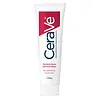What's inside
What's inside
 Key Ingredients
Key Ingredients

No key ingredients
 Benefits
Benefits

 Concerns
Concerns

 Ingredients Side-by-side
Ingredients Side-by-side

Hydrocortisone 1%
Aloe Barbadensis Leaf Juice
Skin ConditioningButylene Glycol
HumectantCalendula Officinalis Flower Extract
MaskingCaprylyl Glycol
EmollientCeratonia Siliqua Gum
EmollientCeteareth-20
CleansingCetearyl Alcohol
EmollientChondrus Crispus
MaskingCocos Nucifera Oil
MaskingEpilobium Angustifolium Flower/Leaf/Stem Extract
Skin ConditioningEthylhexylglycerin
Skin ConditioningGlycerin
HumectantGlyceryl Stearate Se
EmulsifyingHexylene Glycol
EmulsifyingIsopropyl Myristate
EmollientOlea Europaea Fruit Oil
MaskingPhenoxyethanol
PreservativeHydrocortisone 1%, Aloe Barbadensis Leaf Juice, Butylene Glycol, Calendula Officinalis Flower Extract, Caprylyl Glycol, Ceratonia Siliqua Gum, Ceteareth-20, Cetearyl Alcohol, Chondrus Crispus, Cocos Nucifera Oil, Epilobium Angustifolium Flower/Leaf/Stem Extract, Ethylhexylglycerin, Glycerin, Glyceryl Stearate Se, Hexylene Glycol, Isopropyl Myristate, Olea Europaea Fruit Oil, Phenoxyethanol
Hydrocortisone
Water
Skin ConditioningCetearyl Alcohol
EmollientGlycerin
HumectantCeteareth-20
CleansingIsopropyl Myristate
EmollientCyclopentasiloxane
EmollientBenzyl Alcohol
PerfumingIsostearyl Neopentanoate
EmollientCetyl Palmitate
EmollientPEG-40 Stearate
EmulsifyingPotassium Lactate
BufferingCeramide NP
Skin ConditioningCeramide AP
Skin ConditioningPotassium Sorbate
PreservativeCeramide EOP
Skin ConditioningCarbomer
Emulsion StabilisingNiacinamide
SmoothingDimethicone/Vinyltrimethylsiloxysilicate Crosspolymer
Dimethyl Mea
BufferingAloe Barbadensis Leaf Juice
Skin ConditioningMethylparaben
PreservativeSodium Lauroyl Lactylate
EmulsifyingSodium Hyaluronate
HumectantSodium Benzoate
MaskingCholesterol
EmollientAvena Sativa Kernel Extract
AbrasivePhenoxyethanol
PreservativeCitric Acid
BufferingPhytosphingosine
Skin ConditioningXanthan Gum
EmulsifyingMaltodextrin
AbsorbentChrysanthemum Parthenium Extract
Skin ConditioningEthylhexylglycerin
Skin ConditioningHydrocortisone, Water, Cetearyl Alcohol, Glycerin, Ceteareth-20, Isopropyl Myristate, Cyclopentasiloxane, Benzyl Alcohol, Isostearyl Neopentanoate, Cetyl Palmitate, PEG-40 Stearate, Potassium Lactate, Ceramide NP, Ceramide AP, Potassium Sorbate, Ceramide EOP, Carbomer, Niacinamide, Dimethicone/Vinyltrimethylsiloxysilicate Crosspolymer, Dimethyl Mea, Aloe Barbadensis Leaf Juice, Methylparaben, Sodium Lauroyl Lactylate, Sodium Hyaluronate, Sodium Benzoate, Cholesterol, Avena Sativa Kernel Extract, Phenoxyethanol, Citric Acid, Phytosphingosine, Xanthan Gum, Maltodextrin, Chrysanthemum Parthenium Extract, Ethylhexylglycerin
Ingredients Explained
These ingredients are found in both products.
Ingredients higher up in an ingredient list are typically present in a larger amount.
Aloe Barbadensis Leaf Juice comes from leaves of the aloe plant. Aloe Barbadensis Leaf Juice is best known for helping to soothe sunburns. It is also anti-inflammatory, moisturizing, antiseptic, and can help heal wounds.
Aloe is packed with good stuff including Vitamins A, C, and E. These vitamins are antioxidants, which help fight free-radicals and the damage they may cause. Free-radicals are molecules that may damage your skin cells, such as pollution.
Aloe Barbadensis Leaf Juice also contains sugars. These sugars come in the form of monosaccharides and polysaccharides, folic acid, and choline. These sugars are able to help bind moisture to skin.
It also contains minerals such as calcium, 12 anthraquinones, fatty acids, amino acids, and Vitamin B12.
Learn more about Aloe Barbadensis Leaf JuiceCeteareth-20 is an emulsifier and cleansing agent. It is derived from cetearyl alcohol, a fatty alcohol.
As an emulsifier, Ceteareth-20 prevents oil and water from separating. It is also a surfactant. Surfactants help gather oil, pollution, and dirt to be washed away.
Cetearyl alcohol is a mixture of two fatty alcohols: cetyl alcohol and stearyl alcohol. It is mainly used as an emulsifier. Emulsifiers help prevent the separation of oils and products. Due to its composition, it can also be used to thicken a product or help create foam.
Cetearyl alcohol is an emollient. Emollients help soothe and hydrate the skin by trapping moisture.
Studies show Cetearyl alcohol is non-toxic and non-irritating. The FDA allows products labeled "alcohol-free" to have fatty alcohols.
This ingredient is usually derived from plant oils such as palm, vegetable, or coconut oils. There is debate on whether this ingredient will cause acne.
Due to the fatty acid base, this ingredient may not be Malassezia folliculitis safe.
Learn more about Cetearyl AlcoholEthylhexylglycerin (we can't pronounce this either) is commonly used as a preservative and skin softener. It is derived from glyceryl.
You might see Ethylhexylglycerin often paired with other preservatives such as phenoxyethanol. Ethylhexylglycerin has been found to increase the effectiveness of these other preservatives.
Glycerin is already naturally found in your skin. It helps moisturize and protect your skin.
A study from 2016 found glycerin to be more effective as a humectant than AHAs and hyaluronic acid.
As a humectant, it helps the skin stay hydrated by pulling moisture to your skin. The low molecular weight of glycerin allows it to pull moisture into the deeper layers of your skin.
Hydrated skin improves your skin barrier; Your skin barrier helps protect against irritants and bacteria.
Glycerin has also been found to have antimicrobial and antiviral properties. Due to these properties, glycerin is often used in wound and burn treatments.
In cosmetics, glycerin is usually derived from plants such as soybean or palm. However, it can also be sourced from animals, such as tallow or animal fat.
This ingredient is organic, colorless, odorless, and non-toxic.
Glycerin is the name for this ingredient in American English. British English uses Glycerol/Glycerine.
Learn more about GlycerinIsopropyl Myristate is an emollient, thickening agent, and texture enhancer. It is created from isopropyl alcohol and myristic acid.
It is used to help other ingredients be better absorbed. It is also an emollient and may help soften and hydrate the skin.
The comedogenic rating of this ingredient depends on the concentration. Lower amounts results in a lower rating.
Isopropyl Myristate may not be fungal acne safe. It can potentially worsen acne prone skin.
Learn more about Isopropyl MyristatePhenoxyethanol is a preservative that has germicide, antimicrobial, and aromatic properties. Studies show that phenoxyethanol can prevent microbial growth. By itself, it has a scent that is similar to that of a rose.
It's often used in formulations along with Caprylyl Glycol to preserve the shelf life of products.
Hydrocortisone is the name for the hormone cortisol when used in medication.
It is medication and not technically a cosmetic ingredient. Most countries allow topical creams to contain up between 0.05 - 2.5% (depending on the country) of hydrocortisone without a prescription. Higher amounts usually require a prescription from a professional.
Hydrocortisone can help relieve rashes, eczema, itching, and other inflammation induced skin conditions.
We recommend speaking with a professional about using this ingredient.
Learn more about Hydrocortisone